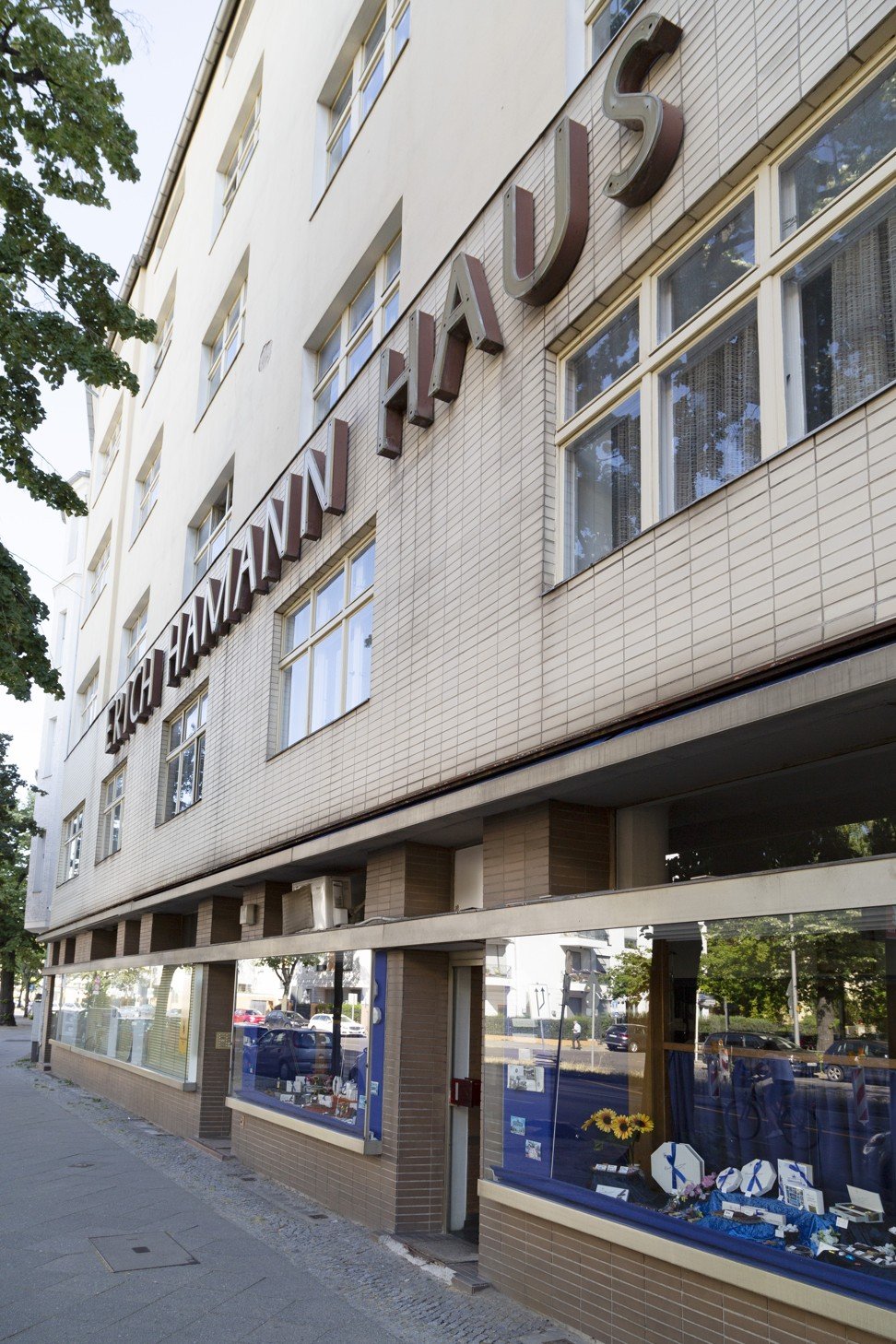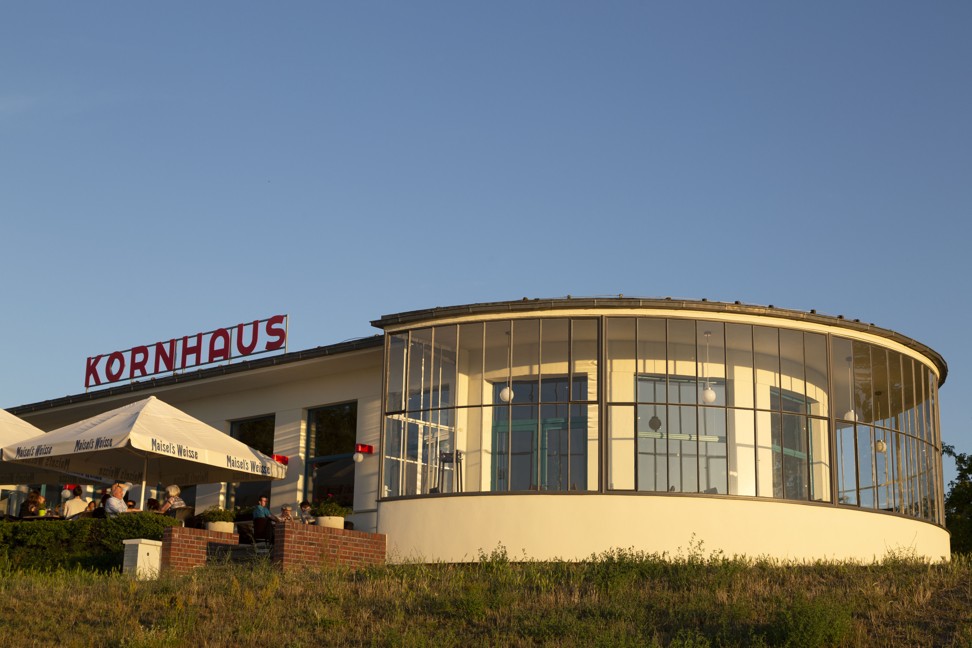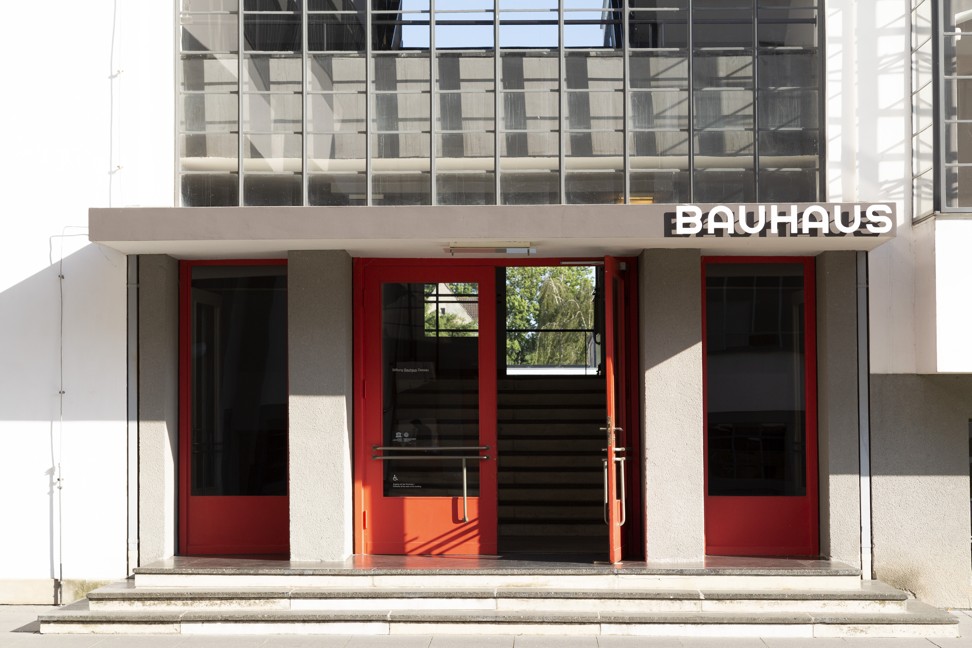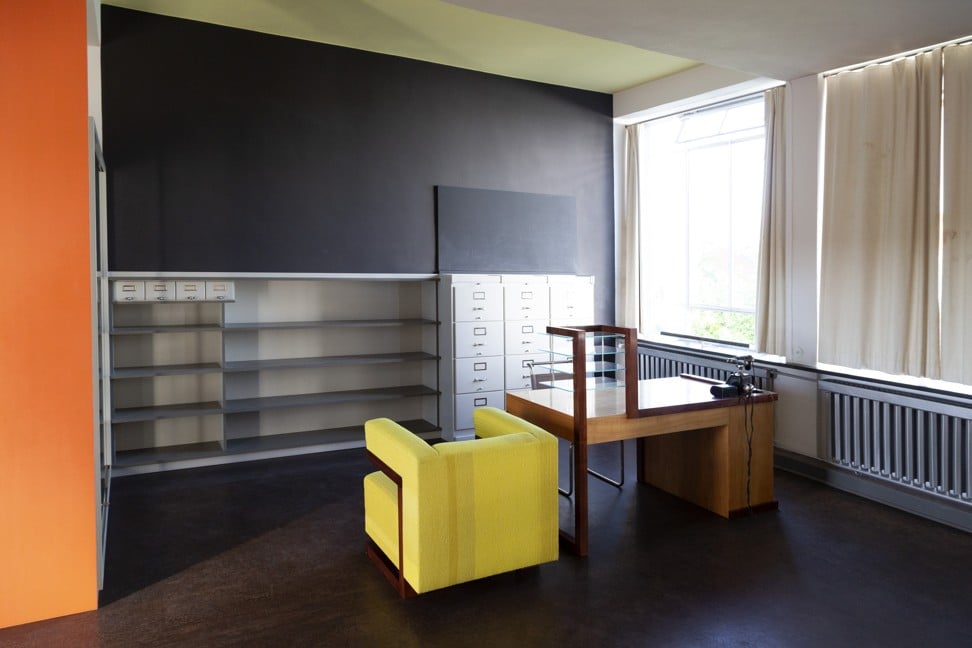
100 years of Bauhaus – German cities celebrate centenary with new museums
- Forced to dissolve under Nazi disapproval, the short-lived school’s design principles nevertheless spread around the world
- Berlin, Dessau and Weimar are marking the iconic institution’s legacy with dedicated museums
“Bauhaus was a school; not a movement, not a company, not a project – just a school,” says Bettina Güldner, of Art Berlin, as we arrive at Erich Hamann Haus, the first stop of a three-hour bus tour of Bauhaus architecture in the German capital.
This year marks the 100th since the foundation, in the central German city of Weimar, of the short-lived but influential school of art and design whose architectural legacy can be seen around the planet, including in the form of Hong Kong’s City Hall. The Staatliches Bauhaus was holistic in nature, bringing together all of the arts in a philosophy known as Gesamtkunstwerk (“total work of art”).
As part of the centenary celebrations, the cities of Weimar, Dessau and Berlin – the three homes of the school – are each opening, or have opened, a Bauhaus museum. The acclaim would no doubt have been unimaginable to those Bauhäusler – students and masters – who were hounded out of Nazi Germany in 1933 for being “un-German” and belonging to “a centre of communist intellectualism”.
Erich Hamann Haus, in Wilmersdorf district, still serves its original functions, as a chocolate store and office building. It was designed in 1928 by Johannes Itten, who developed the course used to introduce Bauhaus students to materials and design principles. Along with a wooden building in Limonenstrasse – designed in 1920 by Walter Gropius, the school’s founding director – Erich Hamann Haus is one of 10 original Bauhaus buildings in the city.

“Projects are scattered in Berlin,” says Güldner. “There is no Bauhaus district.”
On our way to the Hansaviertel district, to view apartment buildings designed by Gropius and Ludwig Mies van der Rohe, the school’s third and final director, we pass the factory-like exterior of the Bauhaus Archive. Usually, this building, designed by Gropius but not built during his lifetime, houses the world’s largest collection of Bauhaus-related documentation, but that has been temporarily removed because an annex – the future Museum for Design, due to open in 2022 – is under construction.
Bauhaus sites are less scattered in Dessau, 125km southwest of Berlin. In 1925, the rapidly growing industrial city was able to attract the Bauhaus – which had come under political pressure in Weimar – partly because Dessau was the base of aircraft manufacturer Junkers. The municipality promised to commission housing for workers on the Dessau-Törten estate and finance the school building, the neat, functional form of which today attracts a steady stream of architecture and design enthusiasts to Gropiusallee, the street on which it stands.
The Bauhaus Museum Dessau is set to open on September 8, coinciding with the city’s annual Bauhaus Festival. The museum is five minutes’ stroll from the Gropius-designed employment office, which is now dwarfed by a prefabricated block of flats erected when this part of the country was known as East Germany. Constructed from yellow brick, the office consists of a cube-shaped administrative section and a low, circular part that members of the public entered while seeking work.
There’s a similar curved balcony on the Kornhaus, a restaurant overlooking a bend in the River Elbe, to the north of the city. Bauhaus teacher Carl Fieger designed this building and its terrace as a place in which to sip a beer on warm summer evenings.
The bus from Dessau to Rosslauplies a route known as the Bauhaus line. Points of interest along it include the Masters’ Houses. The white, flat-roofed complex includes the former home of László Moholy-Nagy, who, in 1937, would start the New Bauhaus (known now as the IIT Institute of Design) in Chicago, in the United States. The Masters’ Houses stand, now as then, amid a pine grove.

“The contrast between the trees – with their natural, irregular forms – and the houses – with their geometric form – this is part of the aesthetic concept of Walter Gropius,” explains Anke John, my guide. “Gropius wanted the trees to throw changing shadows on the buildings and the facade to be alive. He wanted to combine architecture and nature, the outside and inside.
“He wanted visitors to recognise the functions of the different parts of the facade. Every part of the Bauhaus has different types of windows,” she says, as we look towards workshops flooded with natural light. Other visitors are snapping selfies by a grey wall that bears the word Bauhaus in vertically arranged capitals.
After a two-hour train journey (with a change at Halle) from Dessau, I embark on a walking tour of the Bauhaus’ first hometown, and learn about the school’s demise.
“The Bauhaus was founded in Weimar, by Gropius, in 1919, then moved to Dessau [in 1925],” explains my guide, Claudia von der Heyde. “From Dessau they moved to Berlin, only for a couple of months, and in April 1933 they decided to dissolve.”

The decision was a response to pressure applied by the National Socialist authorities. The Nazis regarded modernism with disdain and suspicion, labelling paintings by Bauhaus masters such as Lyonel Feininger, Wassily Kandinsky and Paul Klee as “degenerate art”.
“Many Bauhaus artists decided to leave the country, thus they spread their style worldwide,” says von der Heyde.
The Bauhaus Museum Weimar opened on April 6. The cube-like building tells the story of the school with an emphasis on the six years spent in what was then the capital of the state of Thuringia.
“When the Bauhaus left Weimar, Gropius himself collected certain items because they best represented the time here,” says von der Heyde, pointing towards a handcrafted cradle designed by Peter Keler. Taking the form of an inverted triangle within a circle, the cradle is regarded as an icon of the early Bauhaus years.

When the school was founded, Weimar was also host to Germany’s National Assembly, members having relocated to the city to draft a new constitution. Threats of violence and revolution made Berlin too dangerous a base for parliamentary business.
“It was a new time in Germany,” says von der Heyde. “We had a democracy, the emperor had abdicated, women were allowed to vote and had started working in men’s professions. It was turmoil.”
The period is recalled at Weimar’s National Theatre, a colonnaded classical-style building made from honey-coloured stone. In front stands a statue of literary greats Johann Wolfgang von Goethe and Friedrich Schiller, both of whom lived in Weimar, and on the facade is a time-darkened bronze plaque, designed by Gropius, that states that the National Assembly met in the theatre to give the German people its constitution on August 11, 1919.
At that time, artists and designers believed their skills could benefit society. The early years of the Bauhaus were a time of experimentation and egalitarianism. In Itten’s workshops, the emphasis was on learning by doing.

As we crunch along a gravel footpath in the Park an der Ilm, von der Heyde describes how, to the amusement of Weimar’s residents, Bauhäusler would practise a form of yoga here. Lantern and kite festivals, also held in the park, allowed masters to assess the creativity and practicality of their students’ designs.
In 1923, in Weimar, Gropius instigated a shift away from unique designs to prototypes for manufacture. “They went from artful and masterful handicrafts to industrial design,” says von der Heyde. Marianne Brandt’s sleek teapot with an inbuilt strainer and Wilhelm Wagenfeld’s domed table lamp were designed the following year.
Although the Bauhaus is now associated most commonly with modernist architecture, there was no department dedicated to the practice until the school moved to Dessau. The sole Bauhaus building in Weimar is the Haus am Horn, designed by Georg Muche in 1923, which, with its flat roofs, locals compared to a white chocolate box.
Flat roofs were regarded as un-German by the Nazis, and would be outlawed under building regulations introduced in 1933. By then, though, the Bauhäusler, their ideas and their influence were spreading around the world.
